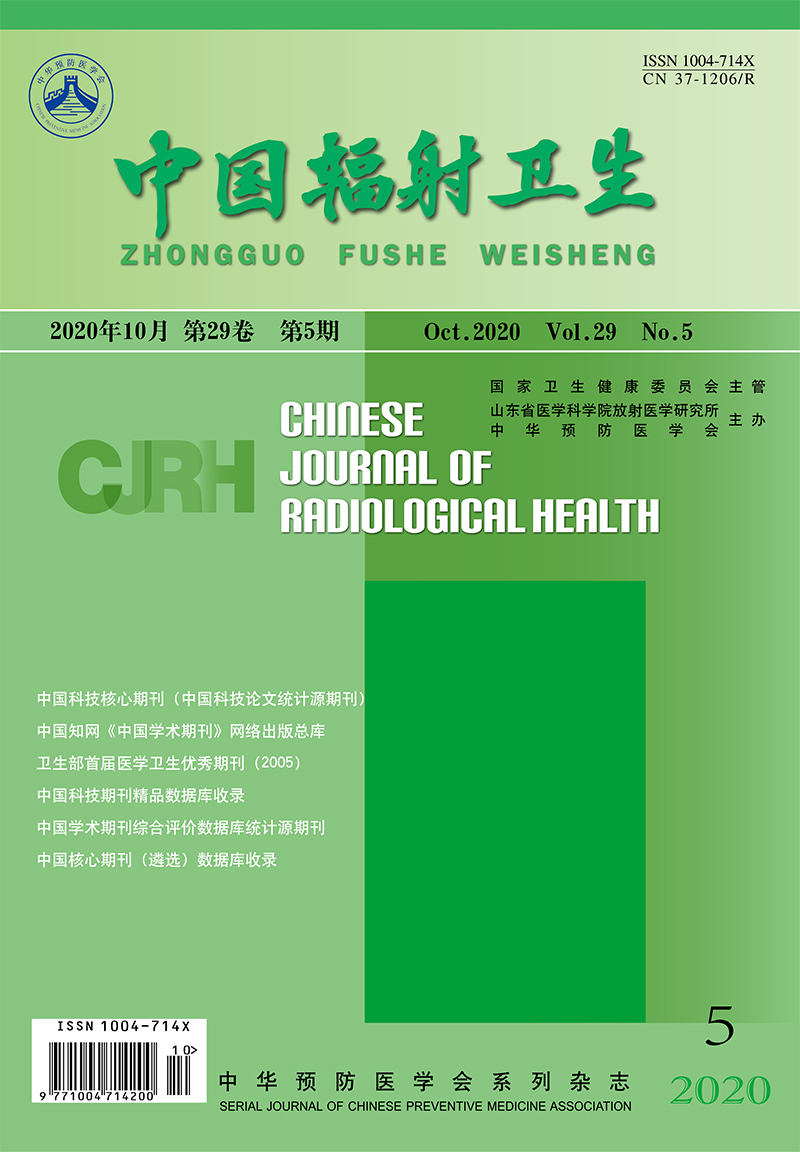Radiation Monitoring/Original Articles
HUANG Dehua, HU Qiumin, LI Chengze, HUANG Yong, DAI Liping, LIANG Ying
Objective Three commonly used clinical fluorodeoxyglucose (fluorine-18-fluorodeoxyglucose, 18F-FDG) dispensing methods including manual dispensing, automatic dispensing and PET drug dispensing injection system were compared in dispensing time, dispensing accuracy and exposure dose of hand and eyes of nuclear medicine workers.Methods Thermoluminescence dosimeters were fixed at the index finger bases of both hands, the outside of the wrists of both hands and lead protective glasses of dispensing workers, respectively. 18F-FDG was dispensed 30 times by the same dispensing worker using three different ways, such as manual dispensing, automatic dispensing, and PET drug dispensing injection system, respectively. Within ±10% of the target activity of 296 MBq each dispensing was qualified, and the number of dispensing, the activity of each dispensing, and the dispensing time of each experiment were recorded.Results The number of dispensing times of manual dispensing, automatic dispensing and PET drug dispensing injection system were 43, 47 and 30, respectively. The success rate of the first dispensing was 76.67%, 73.33% and 100%, respectively. The average dispensing times and time of each case were 1.43 and (39.15 ±32.80) s, 1.56 and (203.60 ±203.11) s, 1 and (82.29 ±26.11) s, respectively. The individual dose equivalent measured by the three methods was calculated. The highest dose equivalent of the hand was at the base of index finger of left and right hand, with (1231.48 ±29.40) μSv/GBq and (1281.24 ±121.00) μSv/GBq by manual dispensing, (862.49 ±30.50) μSv/GBq and (678.64 ±51.68) μSv/GBq by automatic dispensing, and (4.50 ±2.25) μSv/GBq and (7.88 ±1.13) μSv/GBq by the PET drug injection system, respectively. The dose equivalents of the left and right ocular lens of the three different loading methods are 3.39 μSv/GBq and 4.5 μSv/GBq, 1.69 μSv/GBq and 2.5μSv/GBq, 1.69 μSv/GBq and 0, respectively. Therefore, the most number of dispensing times of dispensing worker was estimated to be 1319, 1964 and 214364 times/year under the three dispensing methods according to annual dose equivalent limit of national standards, respectively.Conclusion PET drug dispensing injection system not only has the highest dispensing success rate, accuracy, and stability, but also the best radiation protection. The use of PET drug dispensing injection system can reduce the staffing configuration.

